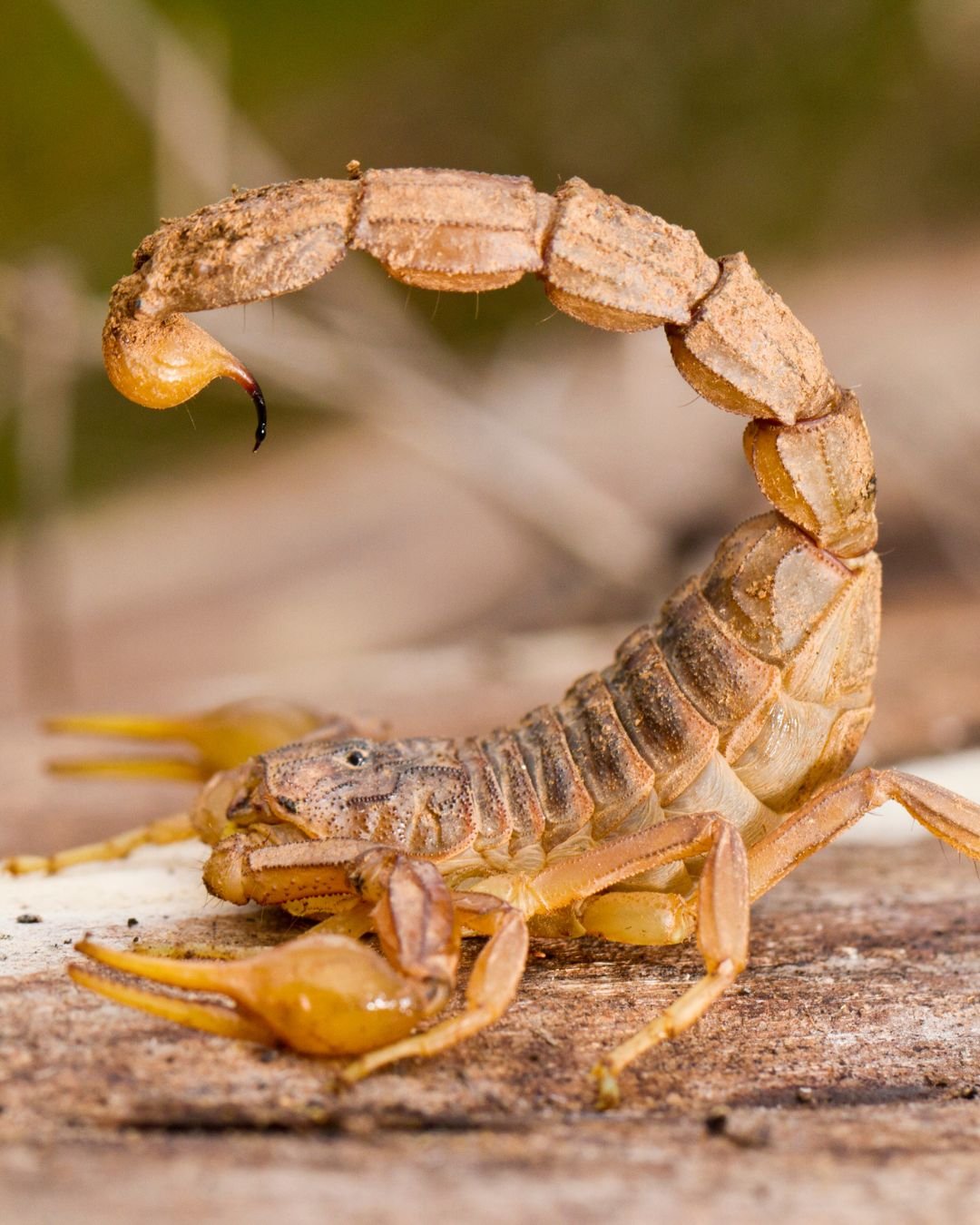Creatures Near & Far
A LOOK AT THE SEVEN WILD EARTH DAY ANIMAL AMBASSADORS AND HOW THEIR MORE LOCAL ANIMAL FAMILY MEMBERS CAN RELATE
On April 22nd, during our Wild Earth Day Celebration, we will be joined by 7 global animal ambassadors. These animals, though not all native to the state of Colorado, intend to teach people about the importance of conservation, habitat restoration, diversity of wildlife, and encourage human-wildlife appreciation. Thanks to our friends & partners over at Nature’s Educators - we are lucky enough to be joined by a Gyr-Saker Falcon, Frilled Lizard, Eurasian Eagle-Owl, Cane Toad, Bark Scorpion, Chaco Golden-knee Tarantula, and Kingsnake.
Considering Wild Bear Nature Center’s specialization in local ecology, we would like to highlight seven Colorado-based species comparable to the ambassadors listed above.
Gyr-Saker Falcon
Peregrine Falcon
GYR-SAKER FALCON → PEREGRINE FALCON
The Gyr-Saker falcon is a hybrid bird; half Gyr Falcon and half Saker Falcon. Gyr Falcons are the second largest falcon living near the Arctic Circle, while the Saker Falcon is a large endangered falcon living in Europe, Asia, and Africa.
Meanwhile, the Peregrine Falcon can be found all over North America, and likes to perch in cliffs, water towers, and even skyscrapers. The Peregrine Falcon is the fastest animal on earth, reaching speeds of 186 mph when diving for prey!
Frilled Lizard
Short-Horned Lizard
FRILLED LIZARD → SHORT-HORNED LIZARD
The Frilled Lizard is a unique species of lizard native to Australia and southern New Guinea. They are recognizable by a leathery collar of skin around their necks that stands up when threatened. This bright orange ‘frill’ wards off potential threats. The majority of their time is spent in trees hunting for insects.
In Colorado, we have the Short-horned Lizard, which spends most of their time in rocky and sandy areas, thus hunting for prey primarily on the ground. In order to avoid predation and being noticed by prey, they camouflage into their surroundings. They are identifiable by a crown of short spikes around their head and down their back, and this lizard is quite short and round, resembling a toad more closely than a lizard.
Cane Toad
Boreal Toad
CANE TOAD → BOREAL TOAD
The Cane Toad is a notorious invasive species throughout a large part of the globe. Native to Mexico, South America, and Central America, they are now anything but geographically isolated. Because Cane Toads have a large appetite, they were introduced around the world as a method of pest control. They did not successfully control insect populations and reproduced very quickly, becoming pests themselves. Furthermore, their skin is toxic to most animals, thus killing several native species that attempt to eat them.
Contrary to the Cane Toad, the Boreal Toad, found in Rocky Mountain alpine lakes between 8,000ft and 12,000ft is listed as endangered. Habitat destruction, pollutants, and the chytrid fungus has significantly decreased populations state-wide, but organizations like Colorado Parks and Wildlife’s continue to push conservation efforts forward.
Eurasian Eagle-Owl
Great-Horned Owl
EURASIAN EAGLE-OWL → GREAT-HORNED OWL
The Eurasian Eagle-owl is one of the largest owl species in the world, and easily identifiable by its large pumpkin-orange eyes, and large ear tufts. Native to Europe and Asia (hence the name), they can be found in a variety of habitats; including rocky outcroppings, high elevation forests, and even urban areas.
Meanwhile, the great-horned owl is one of the most common owl species found across North America and is the largest owl found in Colorado. Similar to the Eurasian Eagle-owl, they have large ear tufts resembling horns, and wide yellow eyes. They are also well-adapted to a variety of climates and habitats and can be found across a vast range of terrain.
Kingsnake
Western Terrestrial Garter Snake
KINGSNAKE → WESTERN TERRESTIAL GARTER SNAKE
The Kingsnake is the most widespread species of snake across the United States and varies in coloration. The species typically lives in rocky outcroppings, forests, fields, and river valleys. They are not venomous and primarily use constriction to capture and kill their prey.
On the other hand, the Western Terrestrial Garter Snake uses a mild venom to stun their prey. There are 6 subspecies of this snake, and they all give birth to live offspring rather than eggs.
Bark Scorpion
Common Striped Bark Scorpion
BARK SCORPION → COMMON STRIKED BARK SCORPION
The Bark Scorpion is native to the Sonoran Desert (Mexico, Southern California, Arizona) and is the most venomous species of scorpion in the United States. Interestingly enough, during the winter they can be found hibernating with up to 40 other individuals at a time.
Meanwhile, the Common Striped Bark Scorpion is the most commonly encountered scorpion species in the United States, and can be found here in Southern Colorado! They can be found under rocks, among dead vegetation, under fallen logs, and even in homes. These two species of scorpion will glow greenish blue under UV light.
Chaco Golden-Knee Tarantula
Oklahoma Brown Tarantula
CHACO GOLDEN-KNEE TARANTULA → OKLAHOMA BROWN TARANTULA
The Chaco Golden-knee Tarantula is native to Uruguay, Argentina, and Brazil, and is identifiable by its striking yellow leg stripes and pink hairs. These hairs, called setae, help the tarantula sense their surroundings.
The Oklahoma Brown Tarantula, which can be found in abundance in La Junta, CO within the Comanche Grasslands, is a hairy brown tarantula with red hairs. Males will travel each September to find a mate, while females may never stray far from their nests for 20 years. You can see the ‘Tarantula Migration’ in La Junta every year!
To meet these creatures in real life, make sure to come say hey at the Wild Earth Day Celebration on Saturday, April 22nd! Nature’s Educators will be at the nature center between 12-3pm.














